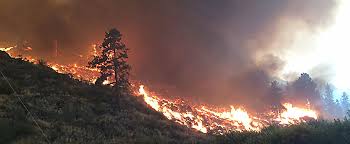This has been a notable year for wildfires, with smoke clogging urban areas of the West and the federal government spending well over $2 billion trying to stop the flames. Homes—and lives—have been lost.
As the fires burned, a narrative galvanized: Decades of fire suppression has left western forests clogged with vegetation. Our federal forests must be thinned to lessen the risk of catastrophic wildfires—even if doing so requires undoing environmental protection laws and preventing citizens from challenging thinning projects in court.
There’s one big problem with that argument—it runs counter to what the science says.
In a presentation to the Senate earlier this month, five activists steeped in the science of wildfire ecology laid out a detailed case showing why the assertion that widespread thinning will lessen wildfire is wrong—and why, therefore, several bills making their way through Congress that would increase “active management” of federal forests are wrongheaded.
The presentation lasts a little more than an hour and can be viewed in its entirety here.
Much of the science of wildfire ecology is relatively new. And, as Randi Spivak of the Center for Biological Diversity points out in the presentation, much of it is counterintuitive.
Here are the speakers, with a featured quote from each:
- Chad Hanson, John Muir Project of the Earth Island Institute
“Fires do not destroy our forests, they actually create incredibly important habitat. We don’t need to weaken environmental laws and increase logging. That would take us exactly the wrong direction.”
- Alexandra Syphard, Conservation Biology Institute
“The assumption behind many of the bills is that vegetation management is the only thing we can do to get out of this problem. It isn’t.”
- Dominick DellaSala, Geos Institute
“The annual emissions from Oregon’s fires … average about one to three percent of the state’s totally emissions. Look at logging. Nobody likes to talk about it, but it’s over 20 times the emissions … compared to wildfires, during an average year.”
- Mary Booth, Partnership for Policy Integrity
“Burning biomass for energy emits more (carbon dioxide) at the stack than burning fossil fuels. Considerably more.”
- Randi Spivak, Center for Biological Diversity
“Trying to stop cold these really big, weather-driven fires—it is like stopping hurricanes. We can’t be expected to do that. Nor, in a lot of cases, should we be putting firefighters’ lives on the line to try to stop it. We need to coexist with fire. We need to figure out a way to live with it.”



We need to reduce smoke in urban areas. We should be able to enjoy time outside and not have worry about long term health affects, Especially in the short window of nice weather in the Pacific North West